RARE! WWII Operation Avalanche 1943 D-Day Invasion of Italy Salerno Beachhead Aerial Reconnaissance Photograph Panoramic Mosaic
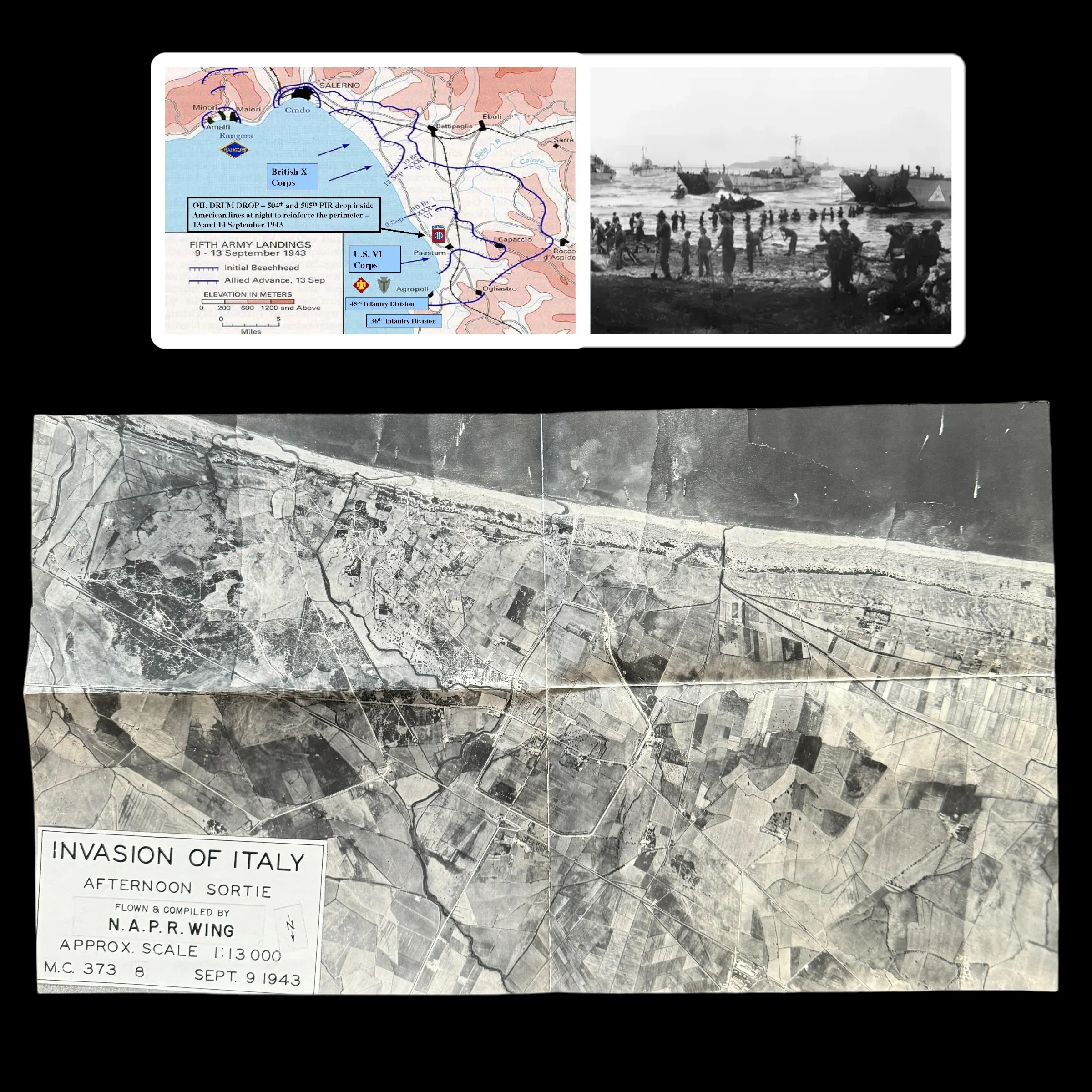
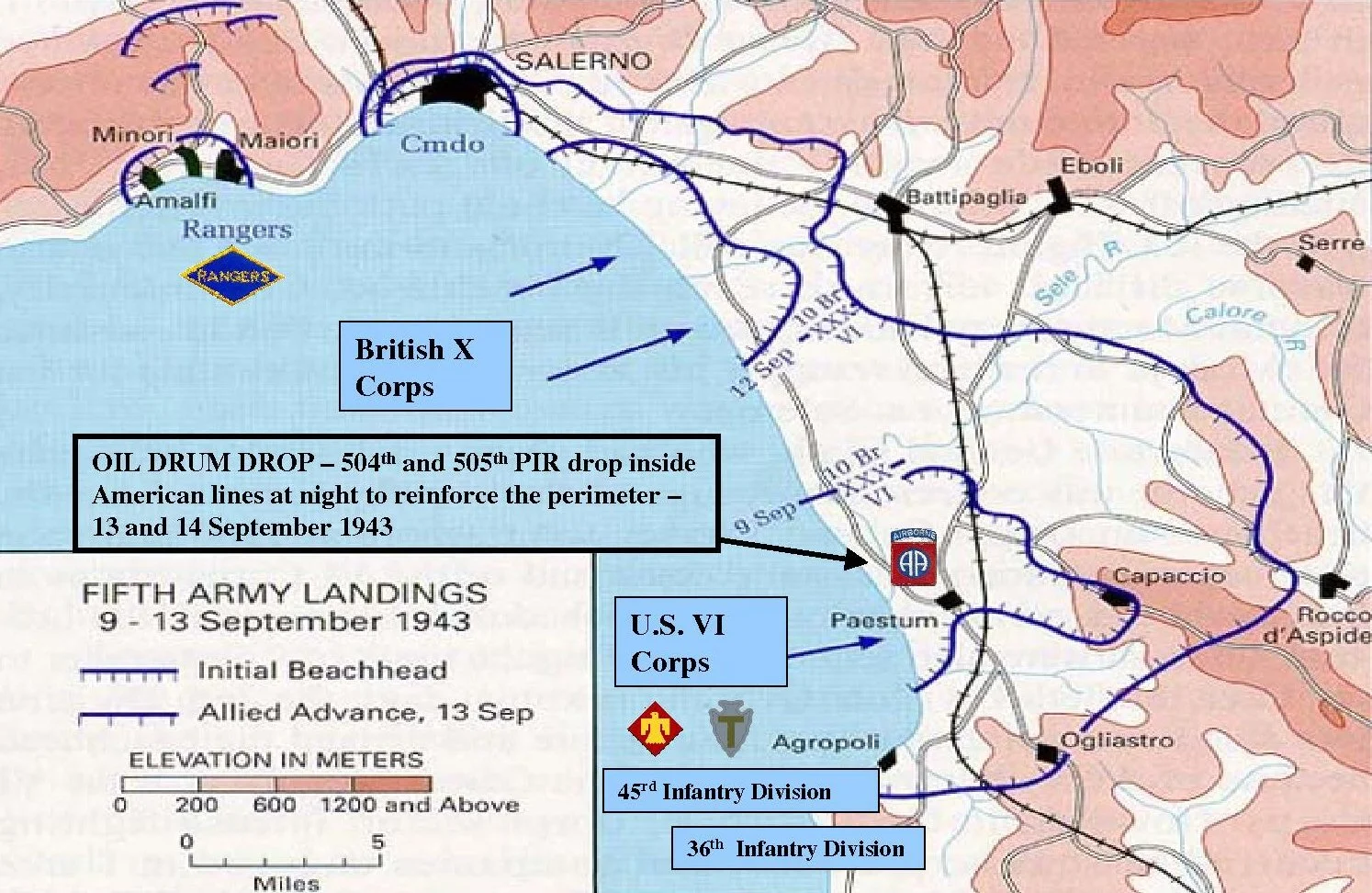








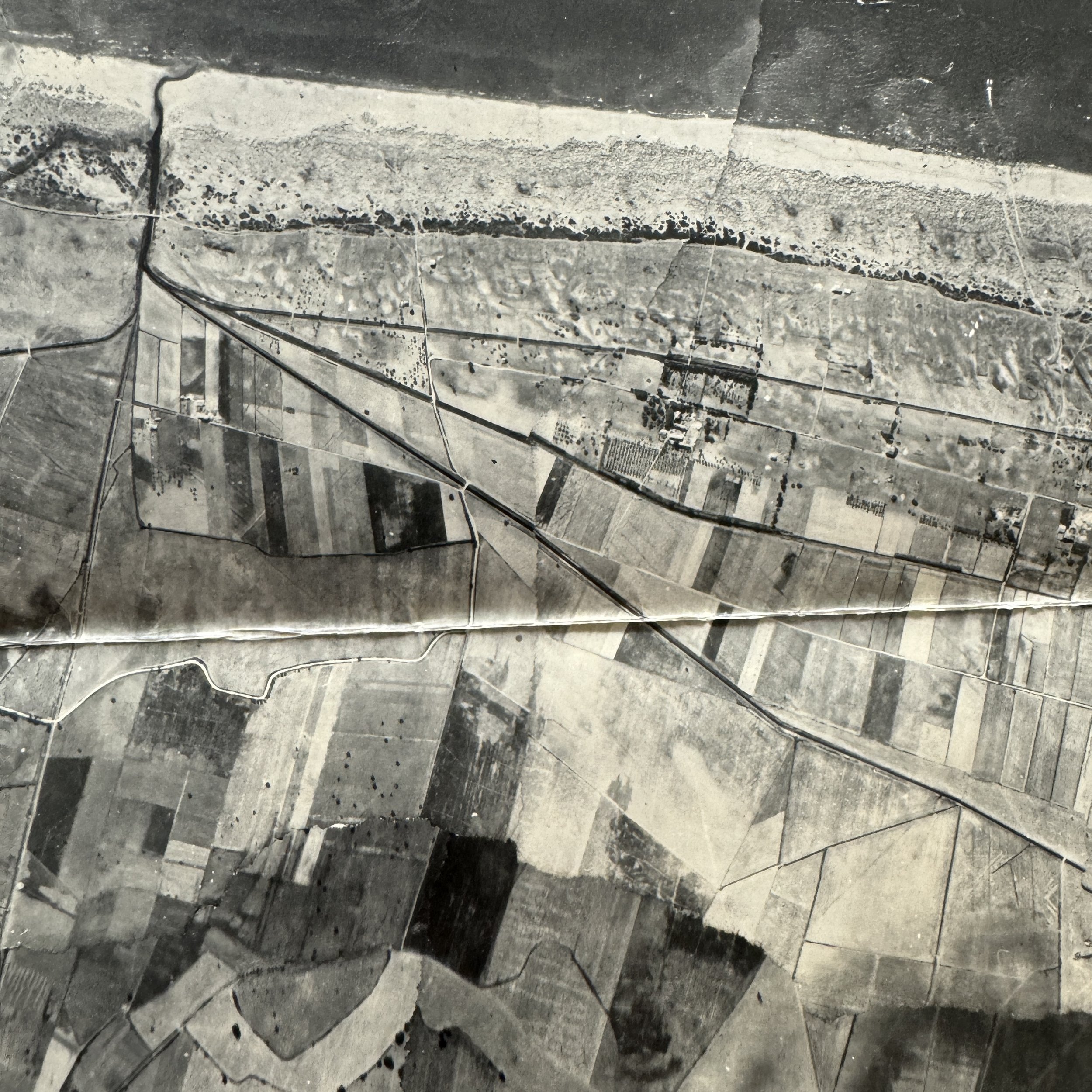
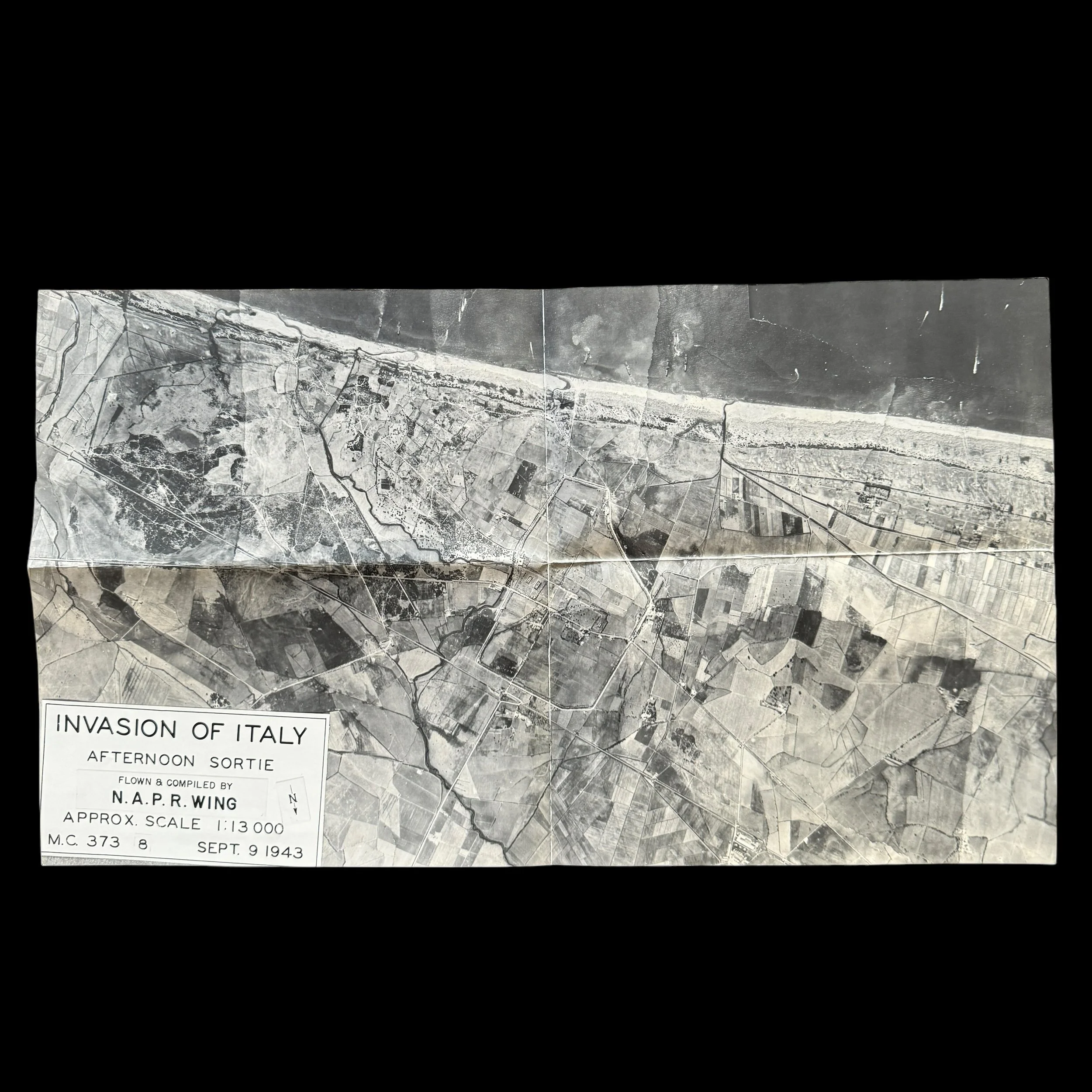
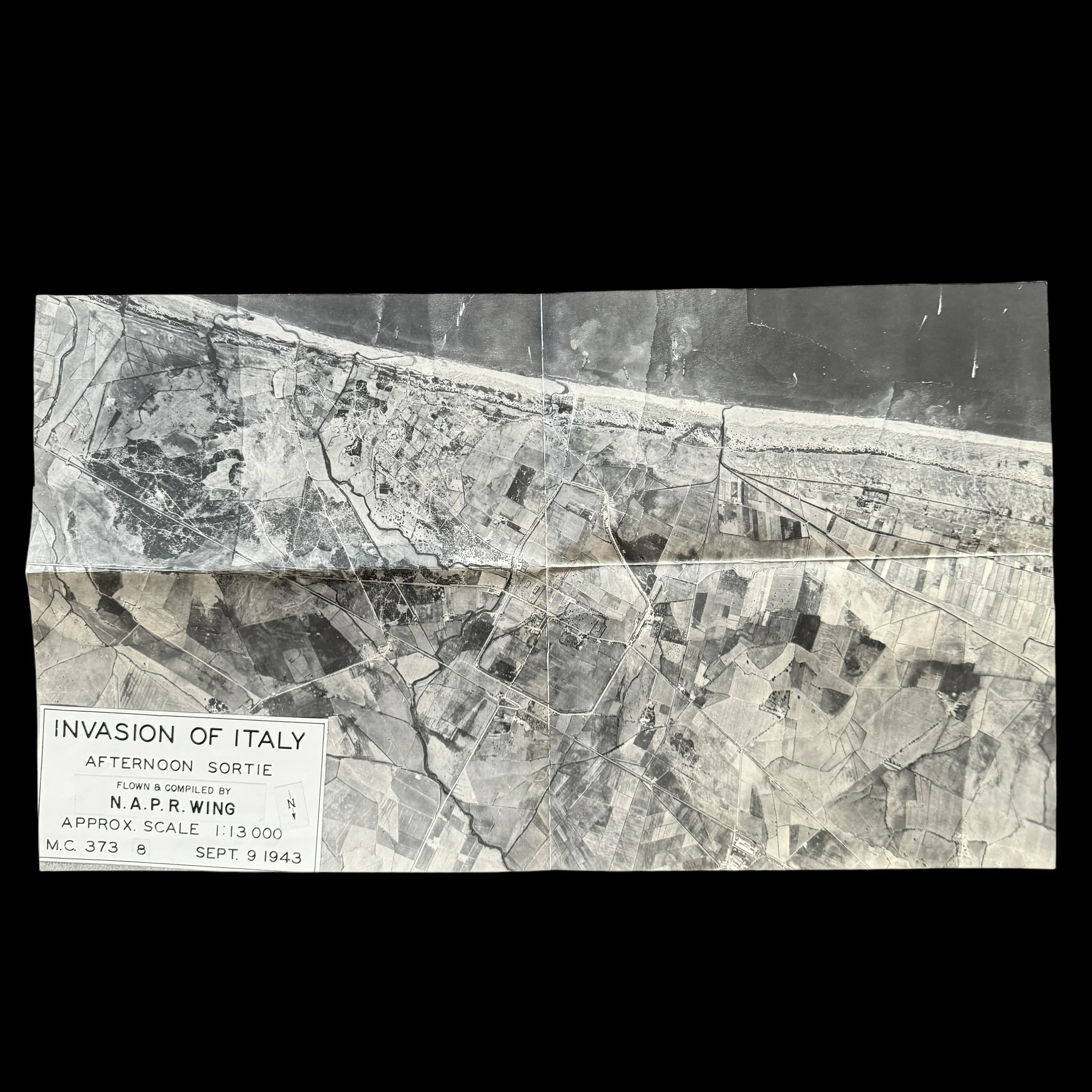
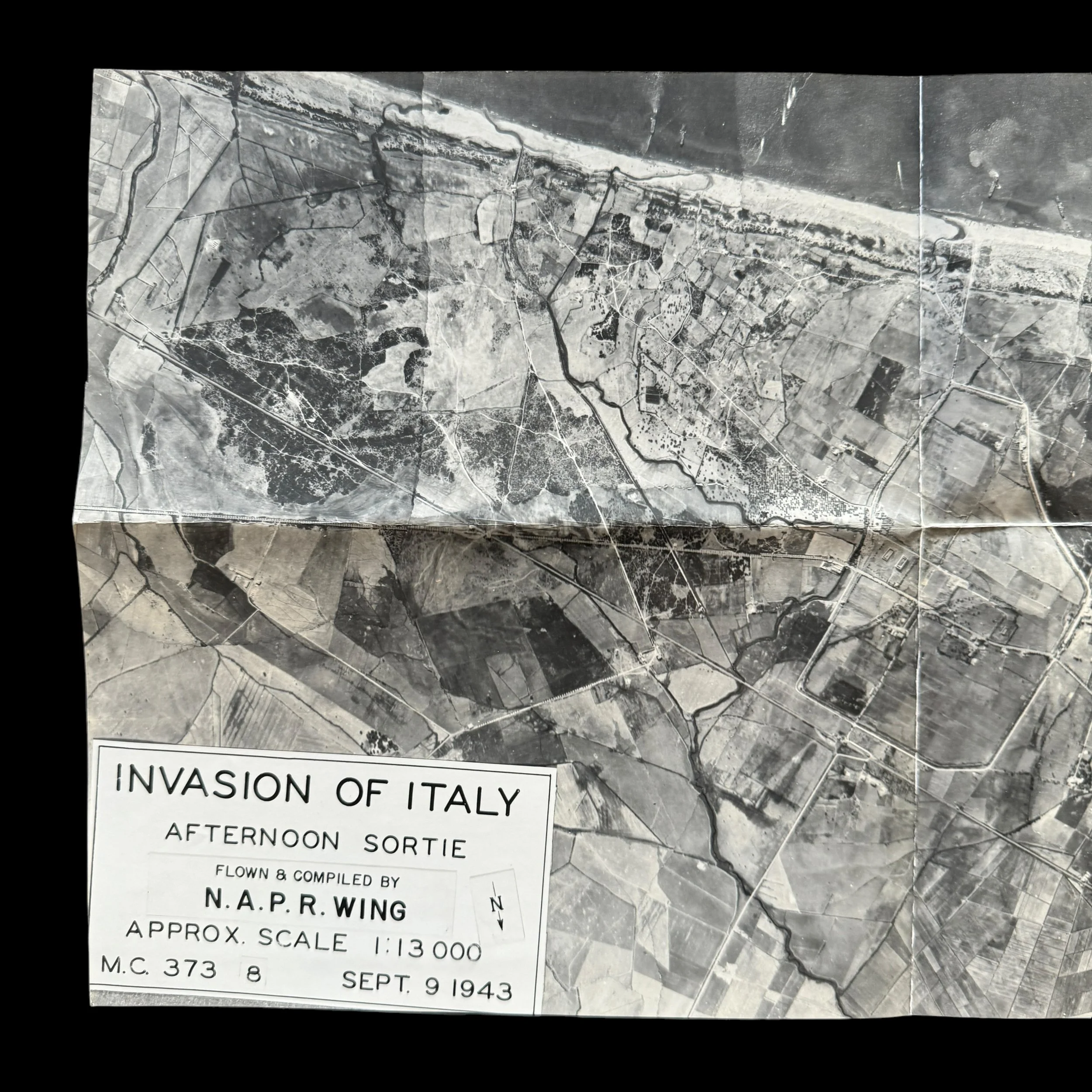
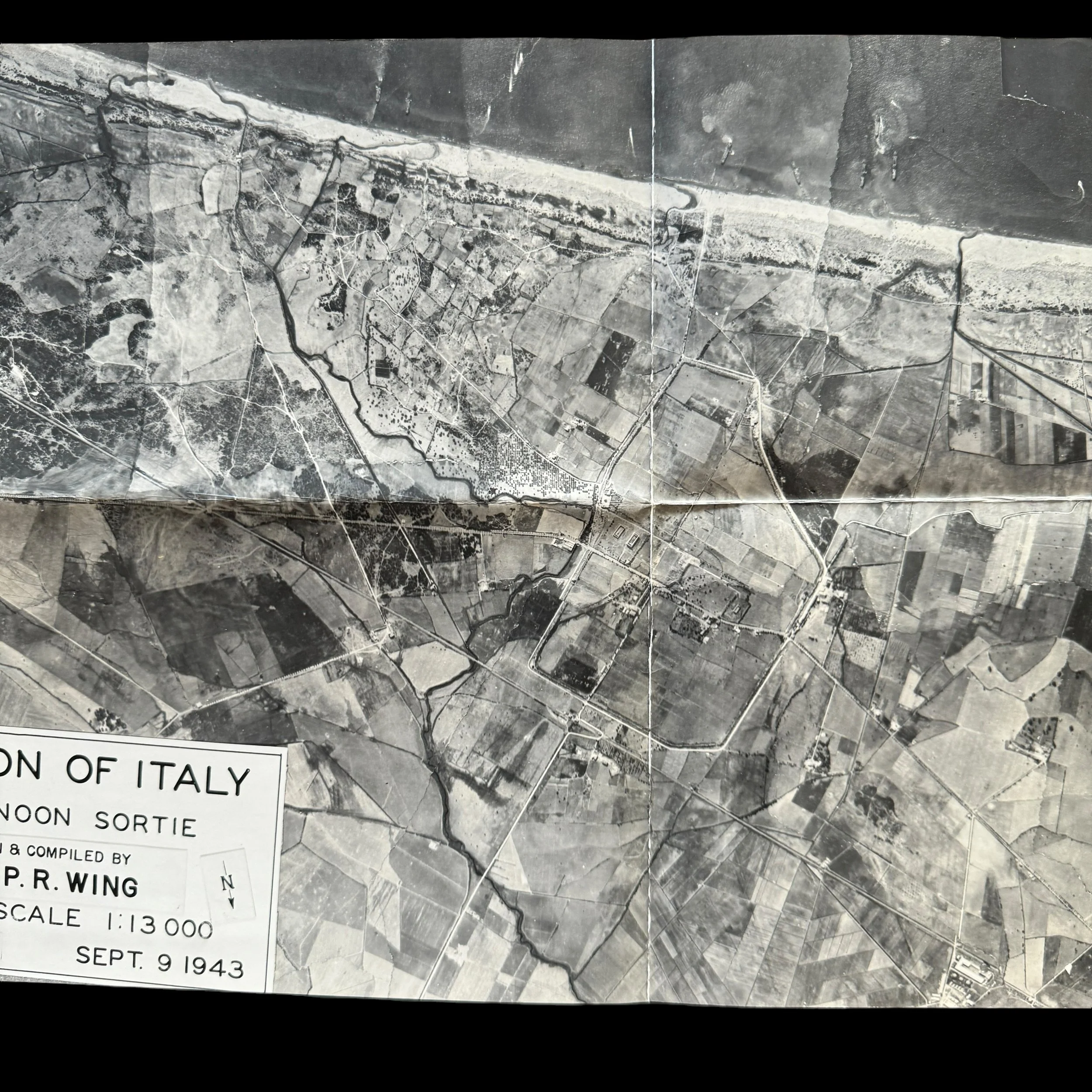
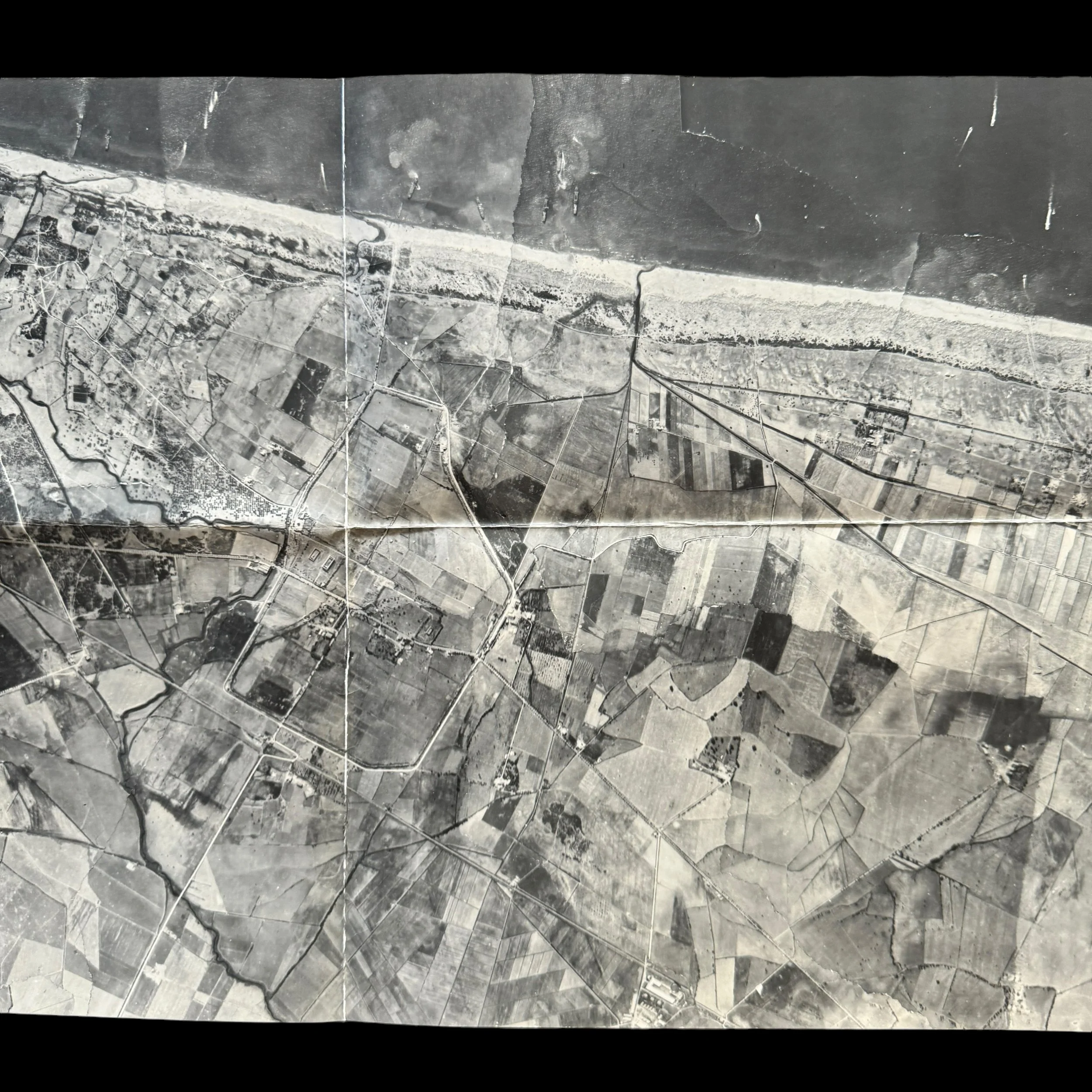
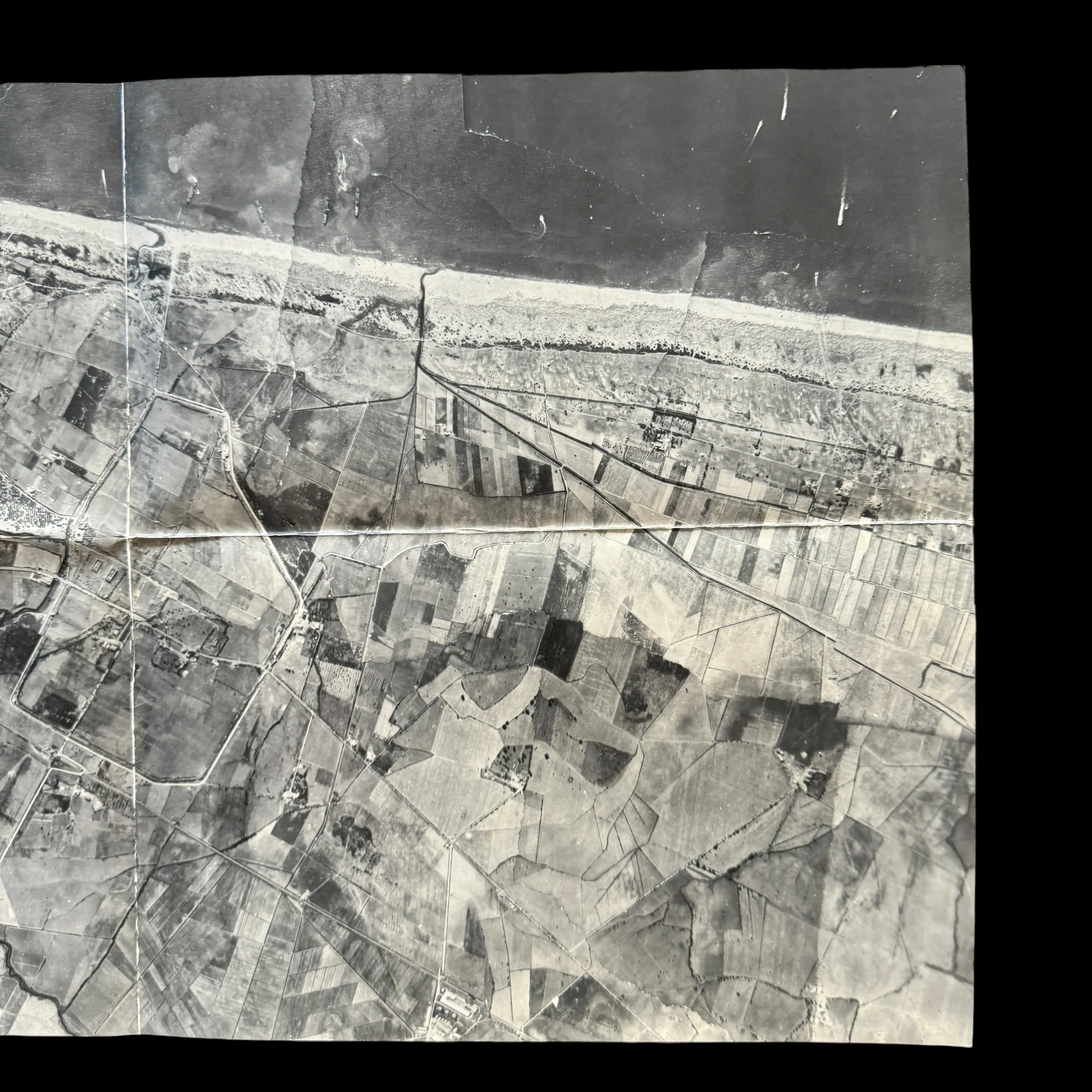
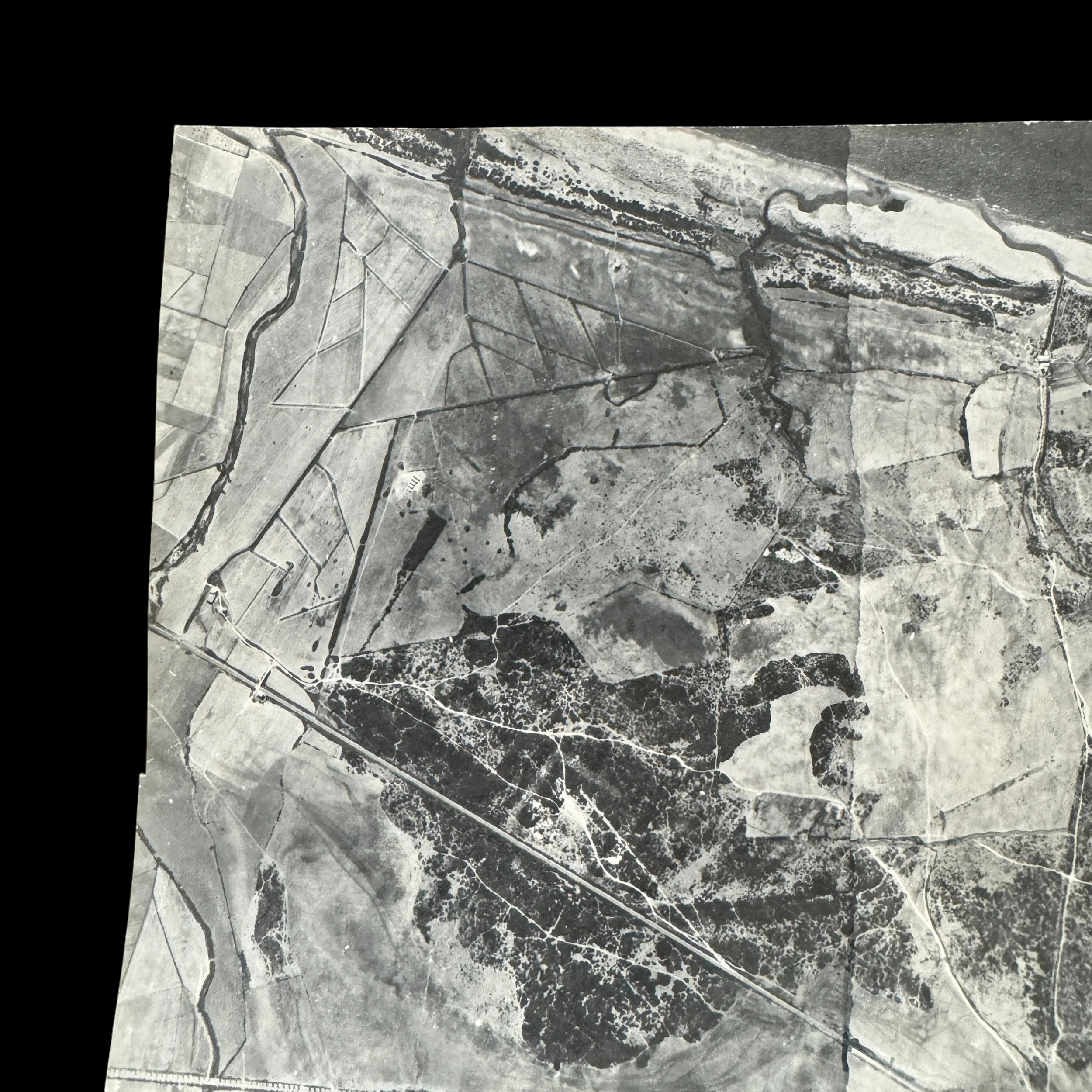
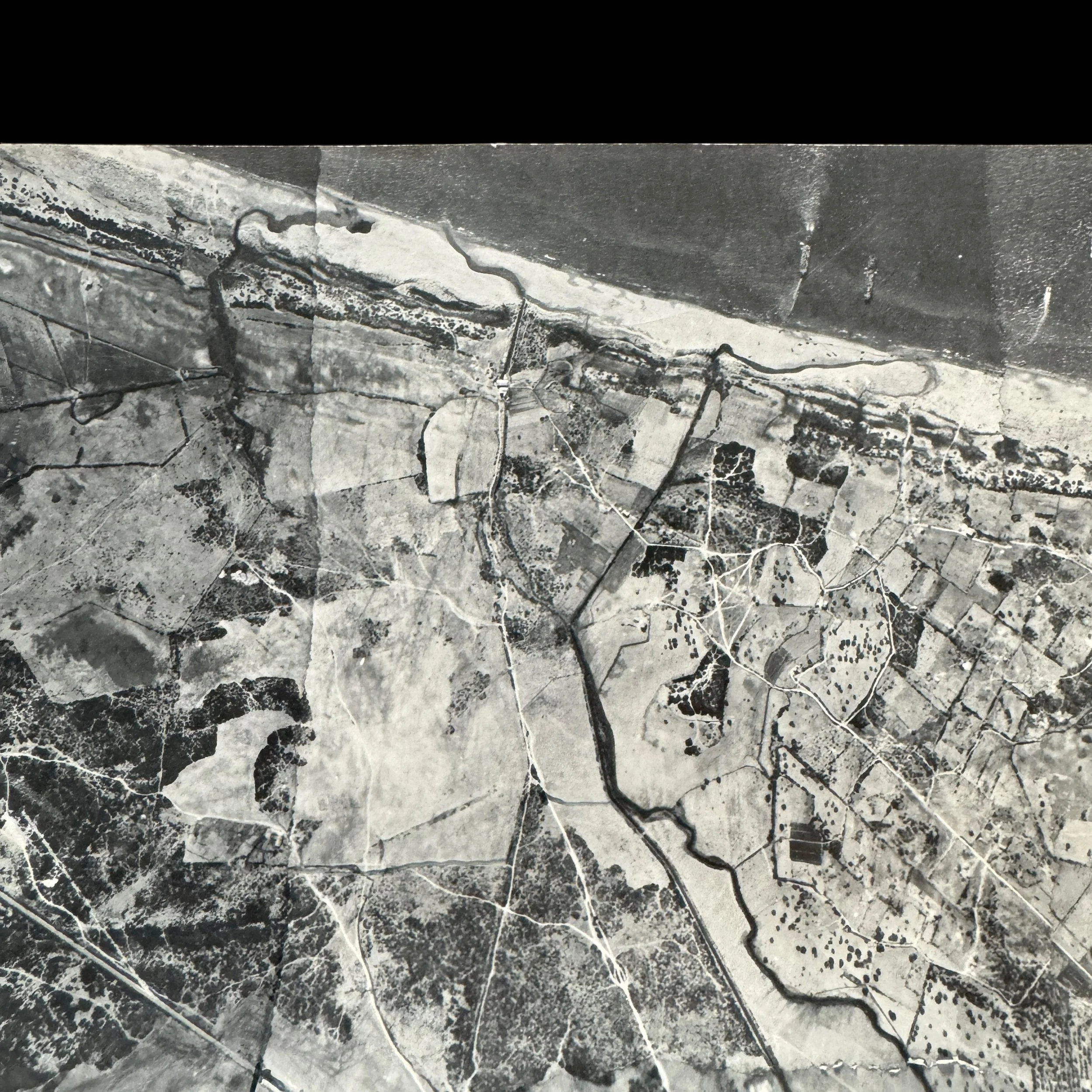
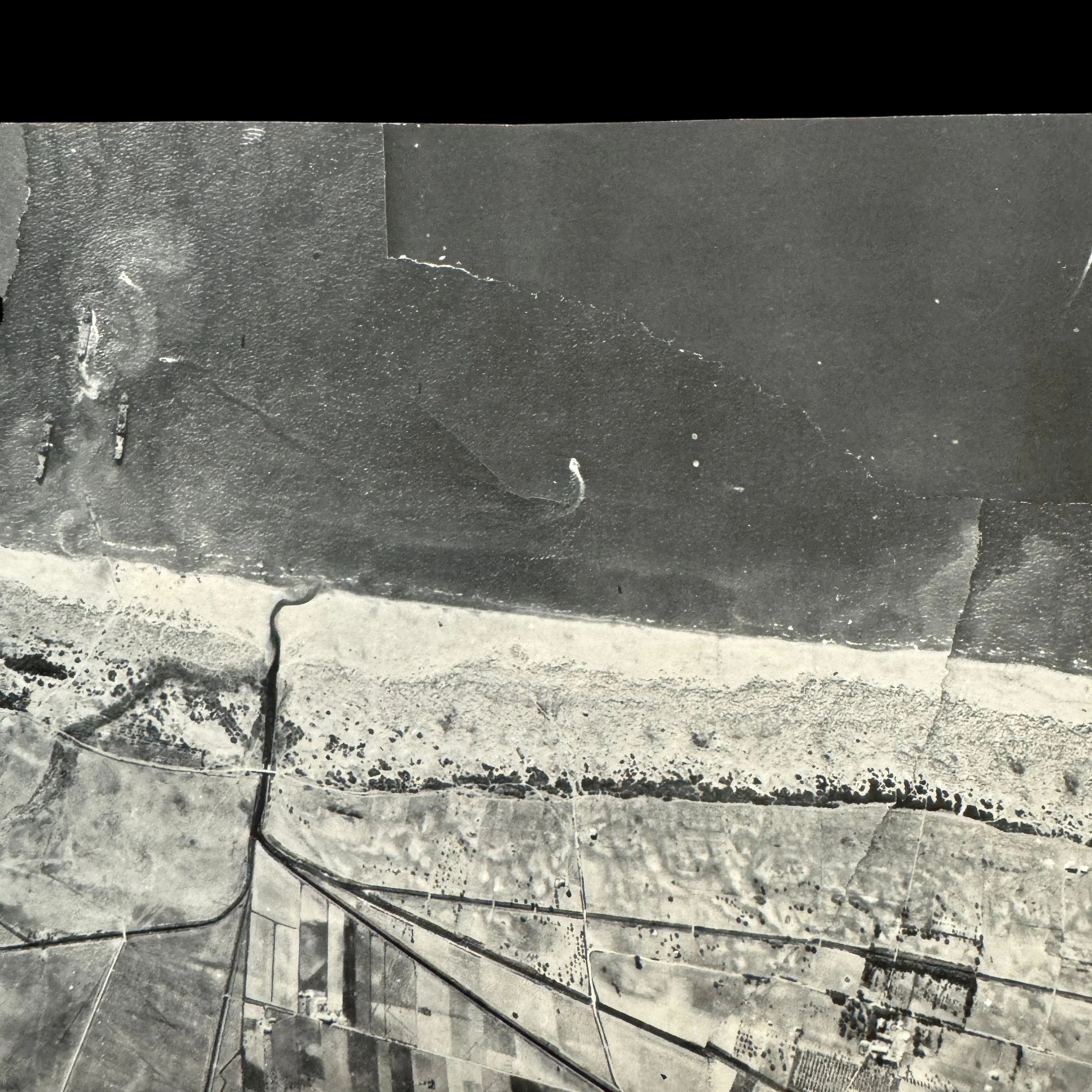
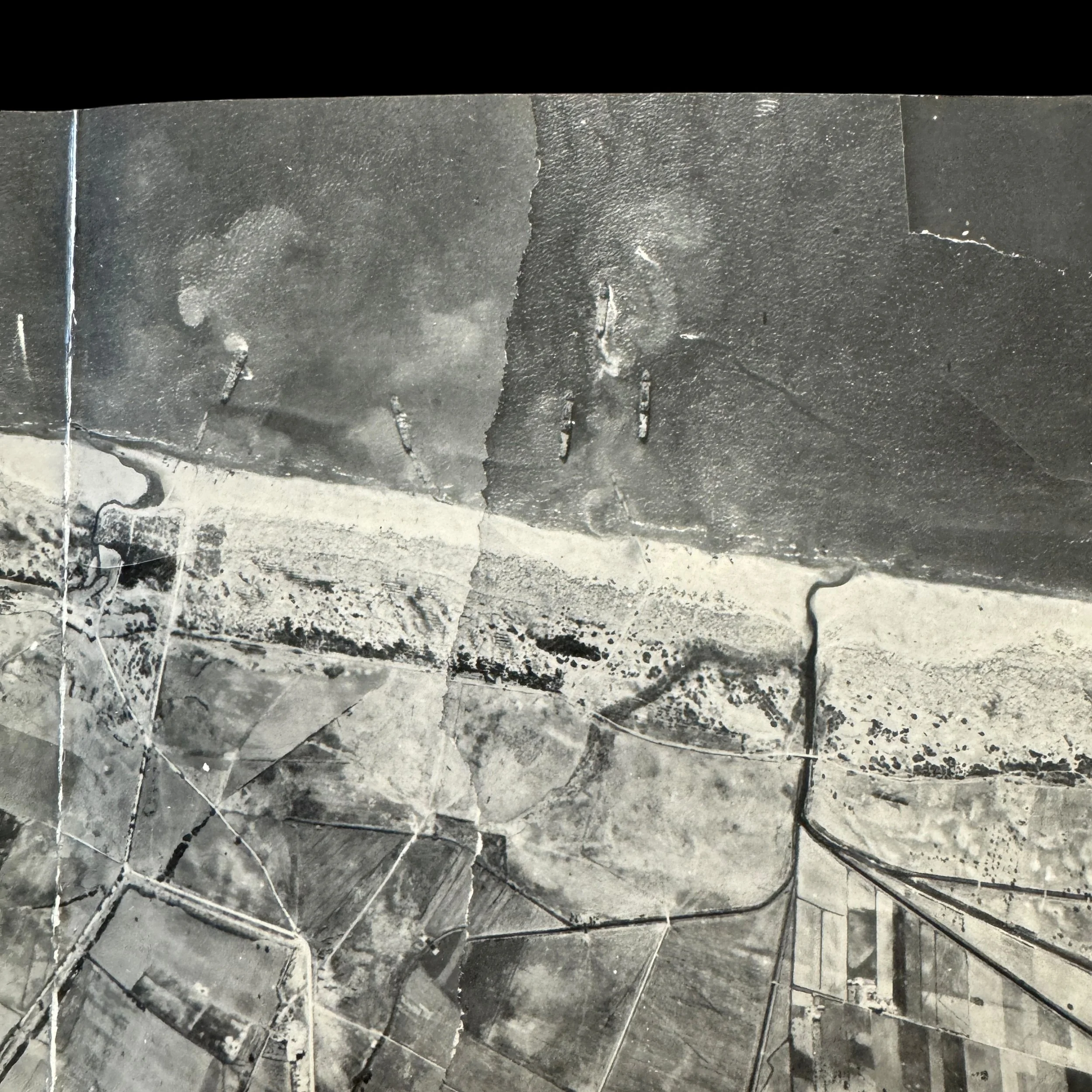
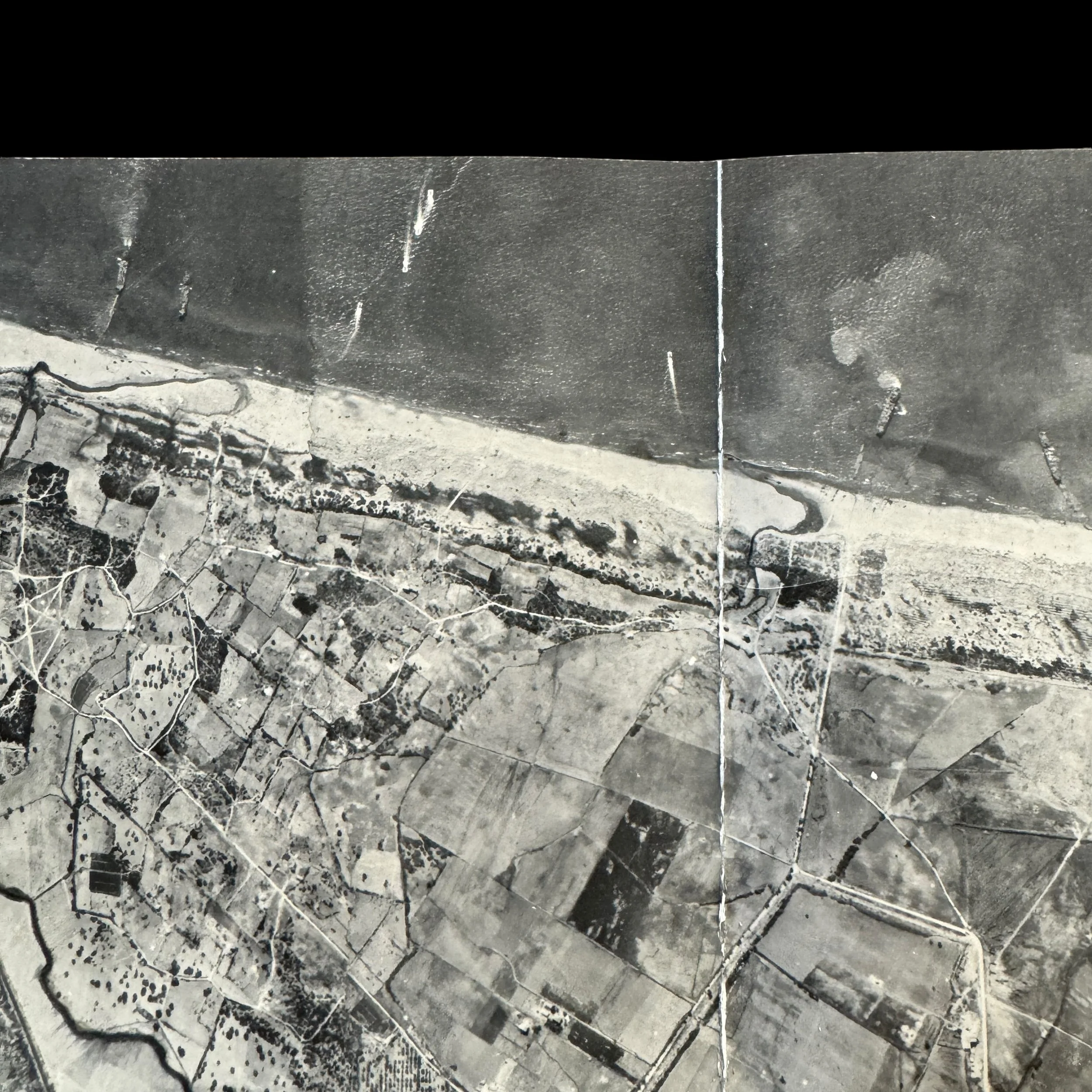
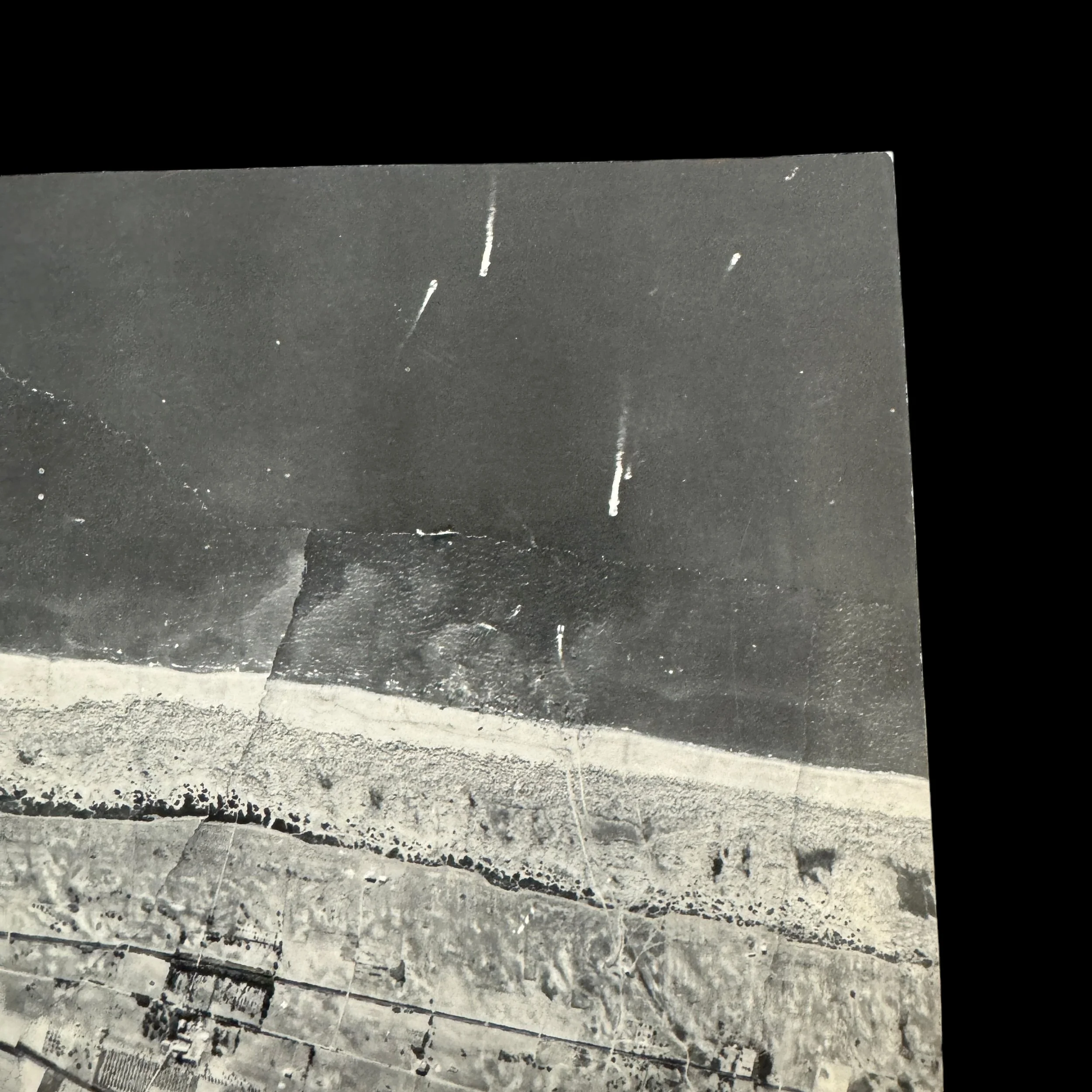
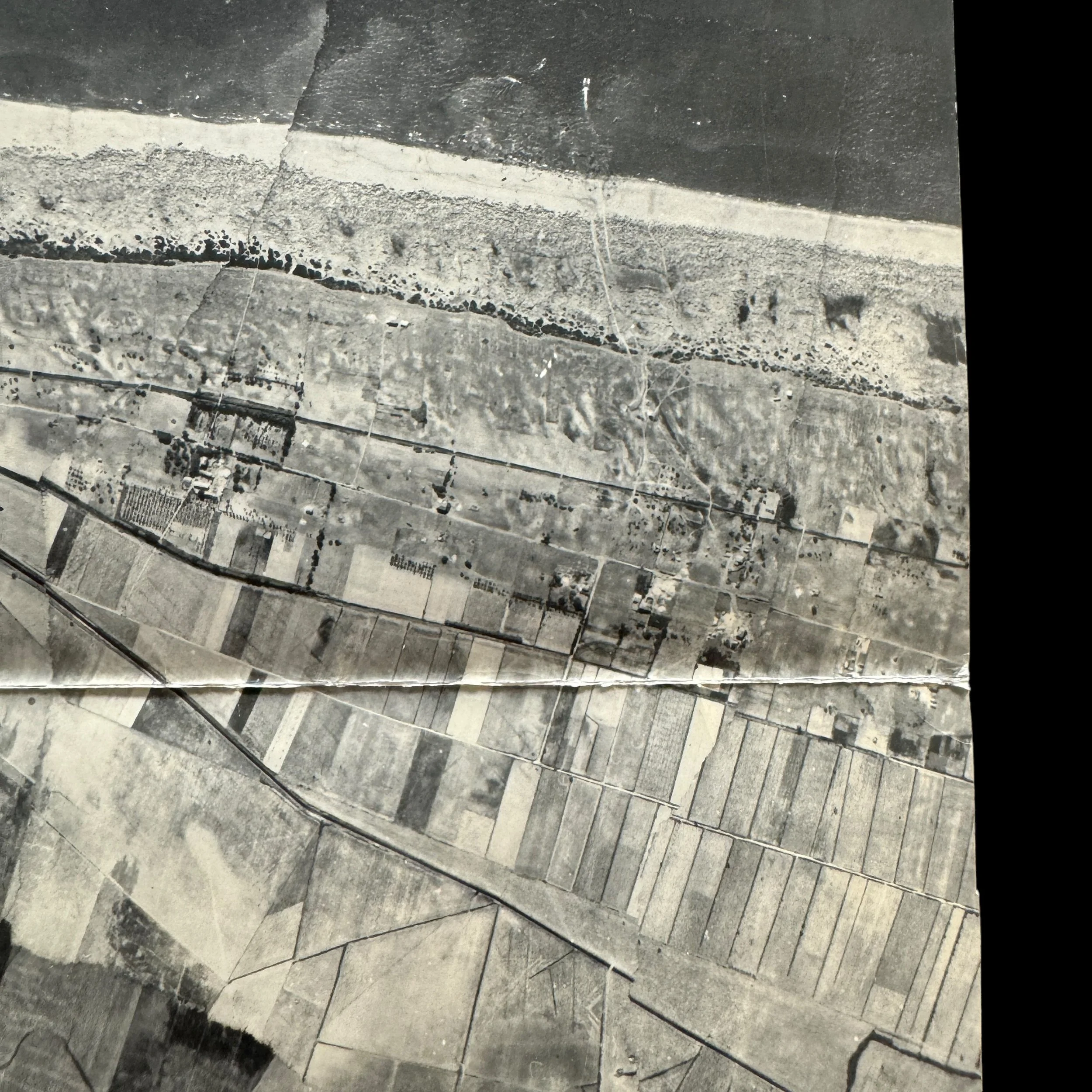
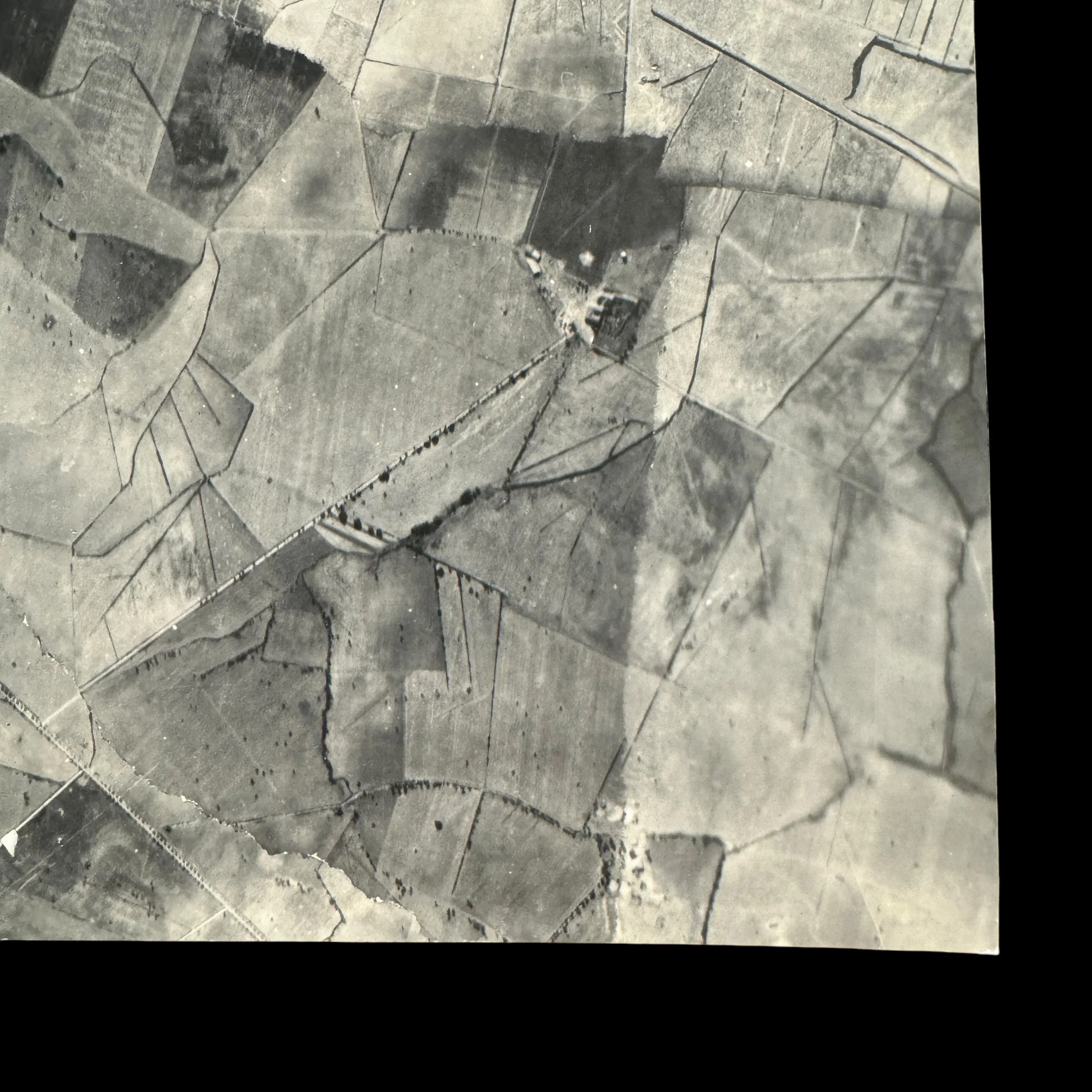
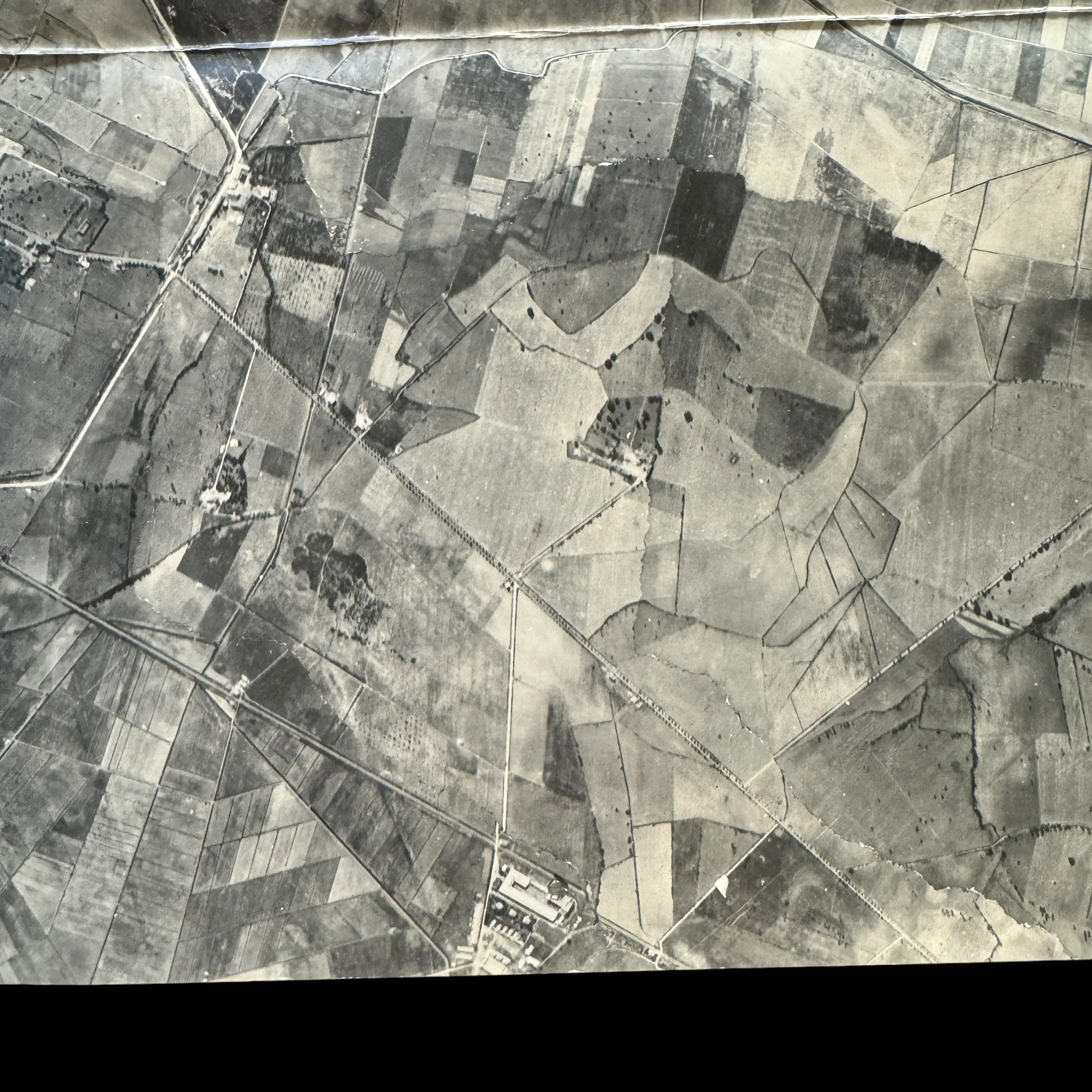
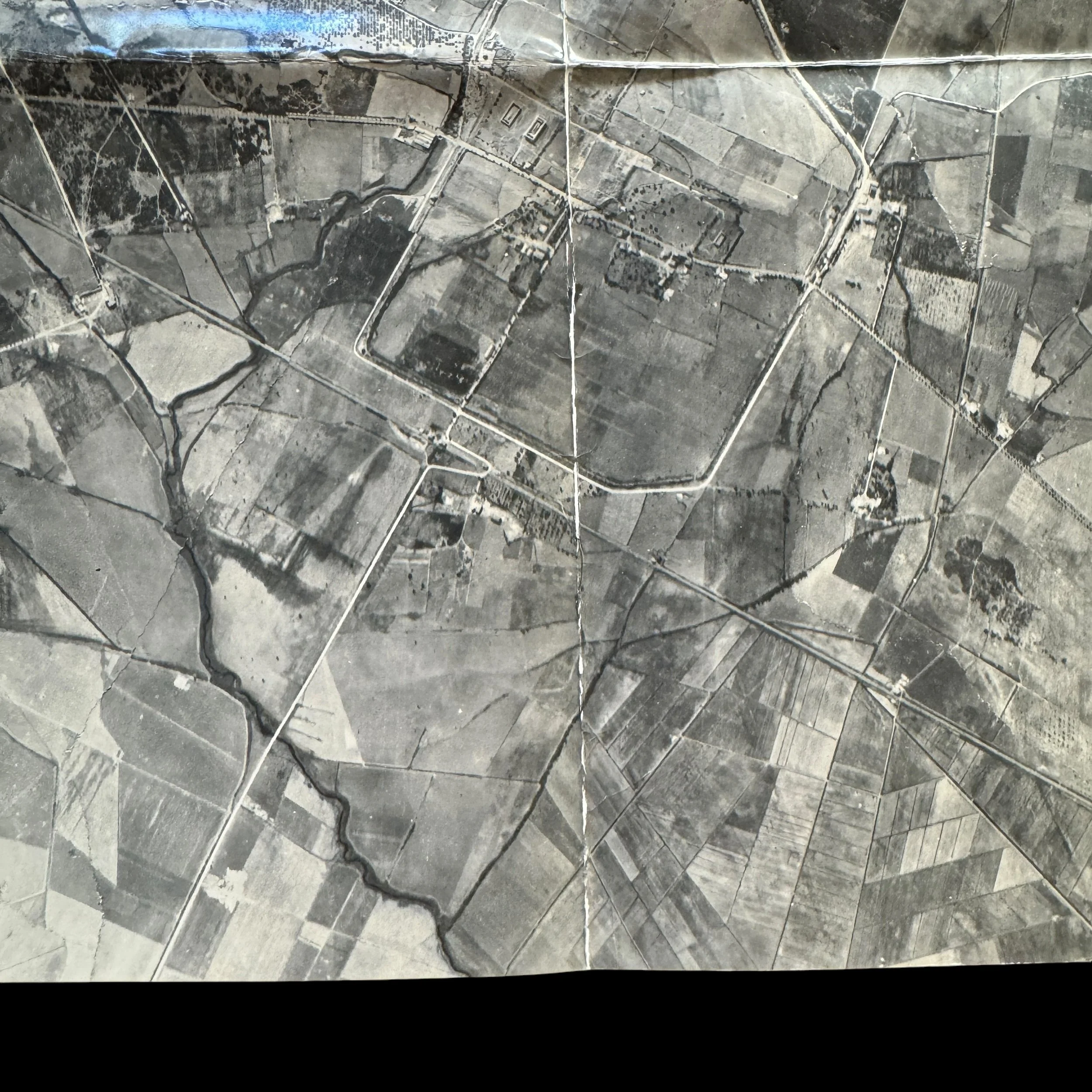
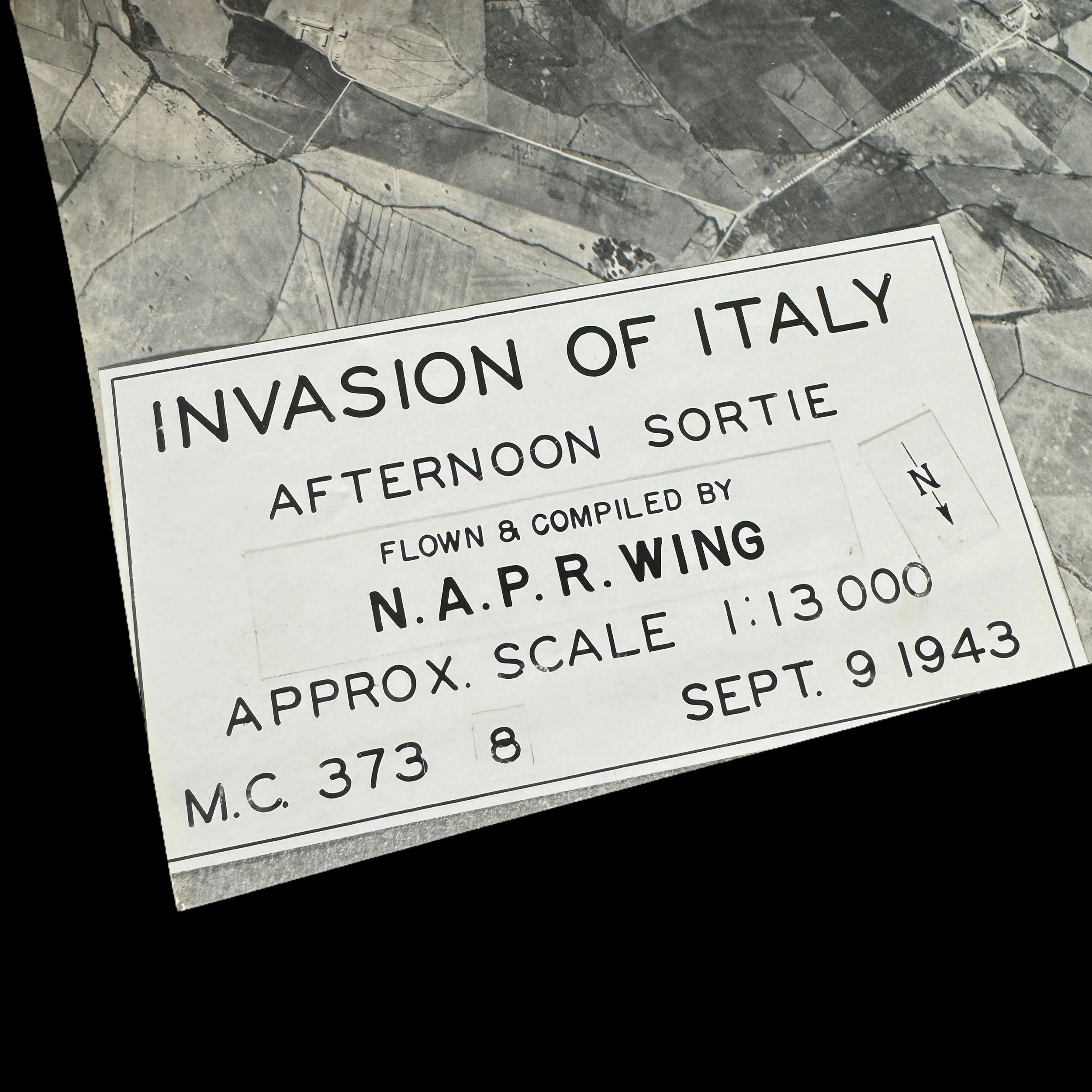

RARE! WWII Operation Avalanche 1943 D-Day Invasion of Italy Salerno Beachhead Aerial Reconnaissance Photograph Panoramic Mosaic
Comes with a hand-signed C.O.A.
Size: 11 x 19.5 inches
This extremely rare and museum-grade WWII artifact is an original September 9, 1943-dated invasion of Italy afternoon "Shorty" aerial reconnaissance photograph panoramic mosaic, flown and compiled by the N.A.P.R. (North African Photo Reconnaissance) Wing. It serves as a critical piece of military intelligence history, providing a detailed snapshot of the Salerno Beachhead landings during Operation Avalanche. This artifact is not just a testament to the technological and logistical efforts behind aerial reconnaissance but also offers a unique view into the invasion of Italy, a crucial phase of the Allied campaign to liberate Europe from Axis control.
The invasion of Italy, launched under the codename Operation Avalanche, began with landings at Salerno on September 9, 1943, and marked a significant turning point in the Mediterranean theater. Aerial reconnaissance photographs such as this one were indispensable tools in planning and executing such large-scale amphibious operations. They provided military commanders with crucial, real-time intelligence on enemy positions, beach conditions, and terrain features, allowing them to adjust their strategies in response to evolving battlefield realities. These photographs were compiled into panoramic mosaics, which provided a broader overview of the terrain and enemy fortifications.
Taken during the critical afternoon hours of the invasion, this particular "Shorty" aerial reconnaissance photograph reveals a clear, sweeping view of the Italian coastline, beachhead positions, and surrounding areas where Allied forces fought to establish a foothold. The N.A.P.R. Wing, responsible for executing these high-risk aerial missions, flew these reconnaissance planes in hostile territory, often unarmed and at low altitudes, to capture these vital images. The photograph was part of a larger mosaic used by the 5th Army under General Mark Clark, allowing commanders to pinpoint German defensive positions and adjust their tactics accordingly.
The invasion of Italy ended in a drawn-out, brutal campaign, with the Allied forces facing fierce resistance from German troops who had taken over defense operations after Italy’s capitulation. The beachhead at Salerno proved particularly perilous, with German Panzer units threatening to push the Allies back into the sea. Yet, with air superiority and timely intelligence gathered from reconnaissance photographs like this one, Allied forces managed to hold their ground and eventually break through, securing the beachhead and beginning the arduous push north through Italy. By the spring of 1945, Italy was liberated, but the campaign is often remembered as one of the most grueling and hard-fought operations of the war.
The role that D-Day beachhead reconnaissance photographs played in military intelligence cannot be understated. These images provided a clear and unbiased picture of enemy defenses, transportation routes, and potential obstacles, allowing Allied planners to adapt their invasion plans with precision. Without such photographic intelligence, the invasions at Salerno, Normandy, and other critical points would have faced even more daunting challenges. The images helped minimize Allied losses and increased the chances of success in these high-stakes operations.
This September 9, 1943, aerial reconnaissance photograph mosaic is an extraordinary artifact, not only for its historical significance but for its rarity. Few such intact reconnaissance photos remain, as they were often destroyed or lost in the chaos of war. As part of a museum-grade collection, this artifact offers a vivid window into the tactical and operational planning that was key to the Allied success in Italy, making it a coveted piece for collectors and historians alike.
This artifact comes with a hand-signed Certificate of Authenticity, verifying its provenance and significance. An item like this stands as a reminder of the critical role that intelligence and reconnaissance played in shaping the outcome of World War II, ensuring that future generations can learn from the bravery and ingenuity of those involved in such perilous missions. The detailed panoramic mosaic continues to be a testament to the technological and strategic advances made during the war and the unsung heroes behind military intelligence efforts.
The D-Day invasion of Italy, known as Operation Avalanche, was a meticulously planned and executed amphibious assault that marked a pivotal moment in the Italian Campaign during World War II. It was one of the largest Allied amphibious operations, involving landings at multiple beachheads along the Italian coastline near the city of Salerno. The operation aimed to establish a foothold on the Italian mainland, following the successful conquest of Sicily, and to force the surrender of Italy and weaken Axis resistance in Europe.
Background and Strategic Importance
By the summer of 1943, the Allies had successfully driven Axis forces out of North Africa and had completed the invasion of Sicily, codenamed Operation Husky. With the Mediterranean Sea under Allied control, the next objective was mainland Italy. Italy was considered the "soft underbelly" of Europe, and its invasion was intended to knock Italy out of the war and open a new front that would draw German forces away from the Eastern Front and Normandy, thereby relieving pressure on Soviet and future operations.
On September 3, 1943, Italy formally surrendered to the Allies, but German forces quickly took control of the country, particularly the southern regions where Allied forces were planning to land. The surrender did not provide the swift victory the Allies had hoped for, and instead, they had to face well-prepared German defenses.
Operational Planning: Setting the Stage for Invasion
The planning for Operation Avalanche involved a complex combination of naval, air, and ground forces. Led by General Mark W. Clark of the U.S. Fifth Army, the operation involved the deployment of both American and British troops, with air and naval support coming from a coalition of Allied nations.
Selection of the Beachheads:
The Salerno coastline, south of Naples, was selected for the landings due to its relatively flat terrain and proximity to major transport routes leading to the city of Naples and the rest of Italy. However, the decision was controversial because the beachhead was within range of German reinforcements and artillery from the surrounding mountains.
The coastline was divided into several zones for the invasion, with both British and American forces assigned specific sectors:
The U.S. VI Corps, under General Ernest J. Dawley, would land on the southern beachheads of Salerno.
The British X Corps, commanded by General Sir Richard McCreery, was tasked with landing on the northern beachheads near the town of Maiori and Vietri sul Mare, extending the Allied front.
Scale of the Amphibious Operation:
Operation Avalanche was a large-scale amphibious assault involving approximately 100,000 troops landing in the initial wave, supported by a vast armada of ships and landing craft. The naval support involved hundreds of vessels, including battleships, cruisers, destroyers, and transport ships, ferrying troops, vehicles, and equipment to the shore.
A total of 450 ships and 1,700 landing craft were involved in the operation, showcasing the sheer scale of the effort.
Air support was also crucial, with thousands of Allied aircraft from North Africa and Sicily providing bombardment, reconnaissance, and fighter protection for the ground forces as they landed.
Beachheads: The Fight for Salerno
The landings took place on the early morning of September 9, 1943, with a combination of naval bombardment and air attacks softening up German defenses before the infantry hit the beaches. The beachheads were divided between American and British sectors:
American Beachheads (Southern Sector):
U.S. VI Corps was assigned the beaches to the south of Salerno, near Paestum and the Sele River. This sector faced some of the toughest German defenses, as the Germans had already fortified positions inland, anticipating an amphibious assault.
The Americans encountered fierce resistance from the German 16th Panzer Division, which had heavily fortified artillery positions overlooking the beaches. The initial waves of American infantry were pinned down under intense artillery and machine-gun fire.
British Beachheads (Northern Sector):
The British X Corps, landing on the northern beachheads near Maiori and Vietri sul Mare, also faced stiff resistance but had more success in establishing their positions early on. The British objective was to secure the road leading to Naples, and they aimed to link up with the Americans to form a continuous front.
One of the British objectives was to take control of Mount Soprano and the surrounding hills, which provided a commanding view of the area. Securing this high ground was crucial to protecting the beachhead from counterattacks.